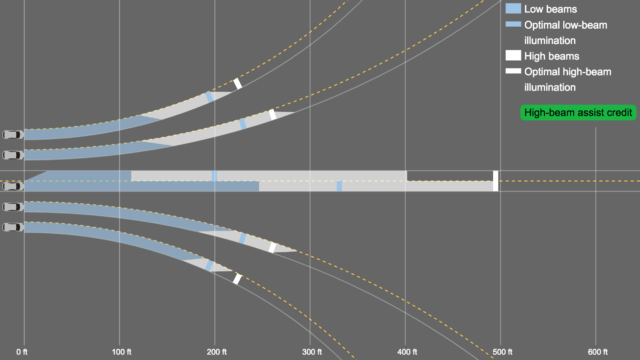
On Sunday night, an Uber self-driving car killed 49-year-old Elaine Herzberg in Tempe, Arizona. A key argument in Uber's defense has been that the road was so dark that even an attentive driver would not have spotted Herzberg in the seconds before the crash.
Herzberg "came from the shadows right into the roadway," Tempe police chief Sylvia Moir told the San Francisco Chronicle on Monday. "The driver said it was like a flash."
-
This is one of the first frames of the Uber dashcam video where Elaine Herzberg is visible. Notice that you can faintly see a white sign to the far right of the image. This sign is much more clearly visible in videos taken by YouTubers.
-
A frame from Brian Kaufman's video shows the spot where Elaine Herzberg was killed.Brian Kaufman
-
A frame from Dana Black's video shows a spot slightly further back (Black's video becomes unfocused at the exact spot corresponding to the other two screenshots).
When police released footage from the Uber vehicle's onboard camera on Wednesday, it seemed to somewhat support this view. In the video, Herzberg's feet become visible only about 1.4 seconds before the final frame of the video. Prior to that point, she appears shrouded in shadow.
But then people in the Tempe area started making their own videos—videos that give a dramatically different impression of that section of roadway.
In this nighttime video, posted to YouTube by Brian Kaufman on Wednesday, the scene of the crash can be seen around 0:33. Features at the sides of the road—including curbs, signs, and bushes—are clearly visible. No pedestrians walk into the road during the video, but it seems clear that Herzberg would have been visible much earlier if the Uber video had been taken with this camera.
Another YouTuber, Dana Black, posted this video. His camera work isn't as good as Kaufman's—the video is blurry and he doesn't hold his camera steady. But his video supports the same basic conclusion. "It's not as dark as that video made it look," Black says in the video as he drives past the point in the road where Herzberg was hit (around 0:33). "My footage is from my Pixel XL and looks pretty similar to real life," he writes in the YouTube description.
To be fair, there are a few other cars on the road in Black's video, which might be adding some illumination. But Kaufman's car appears to be the only vehicle on the road, and visibility is still much better than in Uber's dashcam video.
Headlights are supposed to illuminate more than two seconds ahead of the car
It's not surprising that the road was actually more brightly lit than the Uber video makes out. Think about it: the Uber car was going 38 miles per hour (61km/h), and people on pitch-black country roads drive faster than that all the time. That would be extremely reckless if—as the video implies—headlights can't illuminate the road two seconds ahead at that speed.
The video implies that the Uber car's headlights had a range under 110 feet (33 meters). For comparison, here's a diagram from the Insurance Institute for Highway Safety showing headlight ratings for the car in question, a Volvo XC90:

IIHS shows the XC90 with a range just under 250 feet (76 meters) with "low beams" on. The car's headlights are rated poorly by the IIHS compared with other cars on the market. Still, 250 feet is more than 4 seconds of illumination for a car driving 38 miles per hour. If the Uber car's headlights really didn't illuminate Herzberg until less than two seconds before the crash, there was something seriously wrong with them.
The more likely explanation is that the Uber vehicle's dashcam was poorly configured for nighttime recording, and so the video gives a misleading impression of how bright the scene was and how much warning the driver had.
And even if it's true that the road were poorly lit, it's not clear if that would exonerate Uber. Uber's cars have lidar and radar sensors in addition to cameras, and those sensors don't require ambient light to function. So the vehicle should have spotted Herzberg even if the road was pitch black.
Moreover, interior dashcam footage shows the driver looking down for nearly five seconds just before the accident—so she likely would have missed Herzberg no matter how good the illumination on the road was.
Update: Originally this story featured a generic IIHS diagram on headlight distance. But after it went up my colleague Jonathan Gitlin pointed me to an XC90-specific diagram. So I replaced the diagram and updated the paragraphs on either side accordingly.

reader comments
820